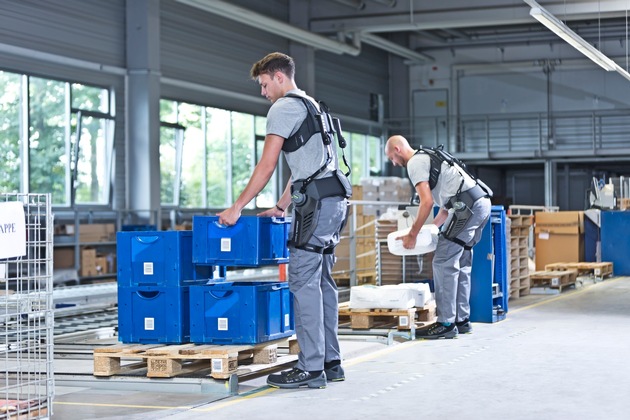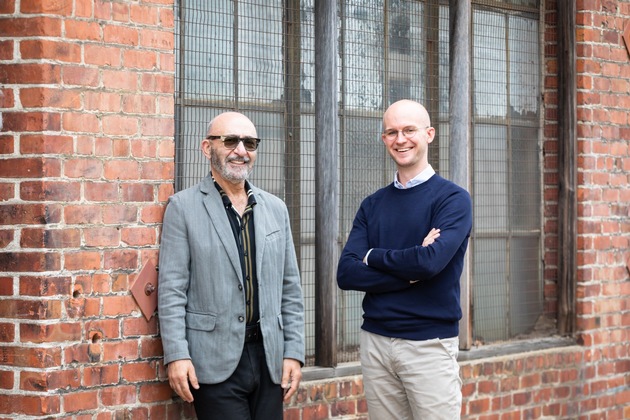Ottobock Acquires Exoskeleton Specialist suitX
Ottobock Acquires Exoskeleton Specialist suitX
Becoming a world leading provider of occupational exoskeletons
Ottobock, a leading global innovator for prosthetics, orthotics, and exoskeletons, today announced the acquisition of 100 per cent of the shares of suitX, a US-based company spun out of the Robotics and Human Engineering Lab at the University of California, Berkeley, which specializes in the research and development of occupational and medical exoskeletons. Ottobock and suitX are combining their expertise and products to take the exoskeleton market to a new level and to foster the worldwide adoption of exoskeletons.
suitX founder and former CEO Dr Homayoon Kazerooni, professor of Mechanical Engineering at the University of California, Berkeley, will remain with the company in the role of Chief Scientist. suitX will become part of Ottobock Bionic Exoskeletons (formerly Ottobock Industrials), the company's division for the development of occupational exoskeletons. The management of Ottobock´s global Bionic Exoskeletons business which runs under the brand name Paexo will continue to be handled from Duderstadt, Germany.
Philipp Schulte-Noelle, CEO of Ottobock, declared: “Together with suitX, Ottobock´s exoskeletons business Paexo will become a world leading provider of exoskeletons in production, logistics, servicing, and the trade sector. We will jointly create significant socio-economic benefits by improving occupational health for employees while reducing sickness absence and treatment costs for companies and healthcare systems. This transaction increases our footprint and network in North America and comes at the perfect time as we expect the market for occupational exoskeleton solutions to grow dynamically in the coming years.”
The portfolios of Ottobock and suitX are complementary and together offer exoskeletons that relieve strain on the body during overhead work and jobs involving lifting. Ottobock’s Paexo product range includes solutions that support the wrist, thumb, and neck. suitX develops and manufactures occupational, healthcare, and recreational exoskeleton systems. The suitX portfolio of occupational exoskeletons includes backX, legX, and shoulderX modules that reduce the risk of injuries among workers. Each module can be worn individually or in combinations suitable for various industrial work settings. In the healthcare arena, Phoenix, a lightweight and FDA-approved exoskeleton, allows individuals with spinal cord injuries to be upright and mobile. suitX is developing a new line of exoskeleton products to support their wearers during recreational activities.
Dr Homayoon Kazerooni said: “I am thrilled about our new chapter of research and innovation with Ottobock. What truly resonates with me is that Ottobock stands for quality of life. Together with Ottobock, we will provide lasting changes to communities worldwide with our state-of-the-art innovation in exoskeleton technologies. I have been lucky to teach and conduct research in Berkeley, a leading public university in the United States. Our research activities on robotic exoskeletons have received both public and private funding. Giving back to the world with our research and innovation is not only our duty, but also an honor. I feel fortunate that I am now put in a position to deliver our life-enhancing medical and industrial exoskeleton products globally. This step is a success not only for suitX but also for the University of California, Berkeley, where entrepreneurial endeavors are fostered to their greatest extent for the good of humans worldwide. I'm looking forward to bringing our technologies to communities internationally with Ottobock for better quality of life. That's what it is all about, and it makes me very happy.”
Dr Soenke Roessing, Head of Ottobock Bionic Exoskeletons, added: “Our exoskeletons offer a huge relief of physical burdens for the workforces in many industrial and logistic workplaces. Shortage of skilled labor, an aging workforce, increasing importance of employee safety and injury prevention as well as a growing awareness of injury costs will contribute to the dynamic growth of the market. We expect that recent technological advancements in weight, ergonomic fit and functionalities, paired with increasing affordability will fuel adoption rates in the industry. We believe that major industrial and retail companies will lead this development and pave the way for their industries.”
It is expected that the market for exoskeletons in the professional environment will multiply to several hundred million USD by 2025. Work-related injuries, especially musculoskeletal disorders (MSD), create significant cost for companies and are the number one cause for work absence resulting in an estimated annual cost of at least 45 billion USD in the US alone1. Exoskeletons for able-bodied users address MSD issues by reducing load for workers resulting in an estimated reduction in the number of sick days by 25 percent. Taking this into account, investing into exoskeletons pays off within the first 12 months after implementation with a positive ROI after two years. The use of exoskeletons in industrial work and logistics can help increase productivity, make manual work more attractive and safe, and thus counteract the increasing shortage of skilled workers in these industries. Moreover, the expected reduction in MSD not only benefits the individual worker’s health, but also eases the cost burden on employers and public health systems.
An exoskeleton is placed on the user´s body and works in tandem with the user. It augments, reinforces, or restores human performance and helps to increase productivity while preventing musculoskeletal disorders. Exoskeletons can support workers across several use cases (e.g., shoulder/neck, back, arms/hands, legs) and industries (e.g. automotive production, manufacturing, maintenance work, logistics).
1 “The Future of Injury Prevention in Logistics Facilities – One Worker, One Wearable Exoskeleton at a Time”, Ottobock SE & Co. KGaA 2021, https://paexo.com
About Ottobock Ottobock develops “wearable human bionics” – medical technology products for people with limited mobility in the fields of Prosthetics, Orthotics and Wheelchairs. The company, founded in 1919, also treats patients in its Patient Care division. Ottobock's mission is to improve their quality of life and increase health economic benefits. Subsidiaries in almost 60 countries offer “Made in Germany” quality worldwide and employ more than 8,000 people. The international activities of the company are coordinated from the head office in Duderstadt. Ottobock has been supporting the Paralympic Games with its technical expertise since 1988. Please see www.ottobock.com for more information.
Since 2012, Ottobock has transferred its expertise in biomechanics to applications for industry solutions to relieve the strain on people with physically demanding jobs and to create healthier working conditions. The company offers a wide range of exoskeletons and ergonomic solutions under the brand name Paexo: Paexo Back and Paexo Soft Back for back relief, Paexo Shoulder and Paexo Neck for overhead support, and Paexo Thumb and Paexo Wrist for thumb and wrist relief, respectively. Please see www.paexo.com for more information.
Media contact United States Rachael Collins Brunswick Group Phone: +1 (646) 464-4657 rcollins@brunswickgroup.com
Media contact Germany Mark C. Schneider Vice President Investor Relations & Corporate Communications Ottobock SE & Co. KGaA T +49 30 398 206 222 MarkC.Schneider@ottobock.com

